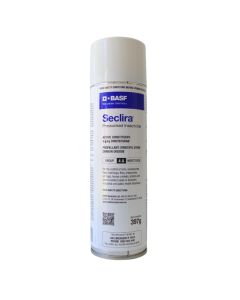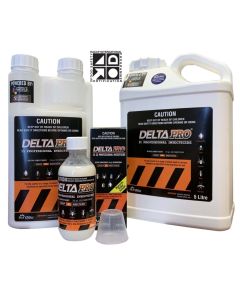Sydney Funnel-Web Spider
- Article
- Sydney Funnel-Web Spider
Sydney Funnel-Web Spider
Scientific Name: Atrax robustus
How to identify a Sydney funnel-web spider
Sydney Funnel-webs are shiny, dark brown to black spiders with finger-like spinnerets (silk-spinning organs) at the end of their abdomen. Males have a large mating spur projecting from the middle of their second pair of legs. If threatened, Sydney Funnel-webs show aggressive behaviour, rearing and displaying their impressive fangs.

Where are sydney funnel-webb spiders commonly found?
Funnel-webs burrow in sheltered sites under logs and rocks where they can find a cool and humid climate. Funnel-webs rush out of their burrow when potential prey, such as beetles, cockroaches, small lizards or snails, walk across silken trip-lines that the spider has placed around the outside of its burrow. They then return to their burrow to eat their meal.
Male Sydney Funnel-web spiders have a habit of wandering into backyards and falling into suburban swimming pools, where they can survive many hours. They also sometimes enter and become trapped in houses. Again, it is true that Sydney Funnel-webs have one of the most toxic venoms (to humans) of any spider. However, it is not true that all funnel-web bites are life-threatening. The venom of juvenile and female Sydney Funnel-web Spiders is much less toxic. Nor do they jump onto, or chase people, or live in houses - these are all urban myths.
Dry daytime surface conditions will dehydrate funnel-web spiders and also expose them to birds and lizards. This is why males that have spent the night in search of a female have to seek cover at dawn. This can be any suitable hideaway that is dark, moist and cool, like a cavity under a rock, or even in a shoe left outdoors.
Why are sydney funnel-web spiders considered a pest?
Funnel-web bites are dangerous and first aid should be given immediately using the pressure bandage/immobilisation technique (as for snake bite) and the victim taken to hospital and given antivenom if necessary. The venom has a neurotoxin component that attacks the human nervous system and, in the worst cases, can result in death. However, there have been no fatalities since the introduction of antivenom.
What is the biology and lifecycle of a sydney funnel-web spider?
Males reach sexual maturity at four years of age, females a year later. When the weather conditions are appropriate, i.e. after heavy rain when the ground is saturated and the air humid, the mature male starts wandering in search of a mate. Females spend almost their whole life in their burrows and await the arrival of a prospective suitor. The male then takes his life in his in his hands by attracting the female out of her burrow and pacifying her to allow him to mate rather than becoming her next meal! The female produces an egg-sack containing a hundred or so eggs and stores this in her burrow until the spiderlings hatch. Males usually die some 6-8 months after reaching maturity, while females may continue to breed for several more years.
Management Tips for Sydney Funnel-Web Spider
Funnel-web spiders tend to live in moist, sandy soils under rocks and logs. Typically it is the male that may find their way into your home, as they go wandering in late summer and autumn looking for a mate.
Funnel-webs may also find their way into your home after periods of heavy rain when their burrows may get flooded. Keeping shoes and clothes off the floor and ensuring door screens / draft excluders are in good condition should stop funnel web spiders entering. Unless you actively hunt out funnel webs there are no specific funnel web spider control techniques.
General Spider Prevention Tips
-
Keeping garden beds and rubbish away from the edge of the house will significantly reduce the spider population.
-
If garden beds next to the house are kept in place, it is important to keeping vegetation trimmed back from the edge of the house and paths.
-
Make sure insect screens and draft excluders are in good repair and well fitting
-
Keep clothes and shoes off the floor to reduce spider hiding places.
General Spider Control Tips
-
The best treatment for web-building spiders is to spray their webs and hiding places with an insecticide (ready to use pump back or aerosol). The key tip to get the best performance is to wait a day or two after spraying before brushing down any webs. This ensures the spiders will have picked up a lethal does of insecticide (by walking on the web) and by using a brush (rather than hose), you can ensure the insecticide remains in place to prevent new spiders taking up residence.
-
To prevent web-building spiders take up residence in the first place, spraying around doors, windows and vents, as well as under eaves and guttering delivers excellent results. As these spots tend to be sheltered from sun and rain, the treatment can last many months.
-
It is a lot more difficult to prevent running spiders entering the home. Carrying out a preventative spray around the perimeter of the home and any openings will have some benefit, although running spiders often walk on the tips of their legs, preventing them from picking up a lethal dose of insecticide. However, if you carry out a preventative treatment for web-building spiders and other insects, the numbers of running spiders will be greatly reduced, as there will be little prey for them to feed on.
-
Even with the best control program the occasional spider may get in. A crawling insect aerosol should be kept on hand to spray the occasional unwanted spider. Ensure the spider receives a good dose and keep your distance.
PRODUCT SOLUTIONS
-
 Seclira Pressurised Insecticide 397g5g/kg Dinotefuran
Seclira Pressurised Insecticide 397g5g/kg DinotefuranSeclira Pressurised Insecticide is a fast-acting, non-repellent, ready-to-use product with System III compatibility for the control of a broad range of pests including ants, and cockroaches.
-
 Coopex Dust Insecticidal Dusting Powder10g/kg Permethrin
Coopex Dust Insecticidal Dusting Powder10g/kg PermethrinCoopex Dust Insecticidal Dusting Powder is registered for the control of cockroaches, ants, fleas, silverfish and bed bugs in and around domestic and industrial premises, food preparation and storage areas. Also for control of mushroom flies in mushroom housing and bees in wall cavities.
-
 Biflex Aqua Max Insecticide and Termiticide100g/L Bifenthrin
Biflex Aqua Max Insecticide and Termiticide100g/L BifenthrinBiflex AquaMax is the first ever Professional Strength, multi-insecticide and termiticide. Effective on a wide range of common household pests and all termite species in Australia.
-
 Antagonist Pro Insecticide80g/L Bifenthrin
Antagonist Pro Insecticide80g/L BifenthrinANTagonist PRO insecticide is a suspension concentrate formulation containing a Polymer Enhanced Synthetic Pyrethroid approved for the treatment of ants, spiders, wasps, cockroaches, mosquitoes, midges, fleas, flies, ticks, termites and turf pests including lawn armyworms, sod webworms, argentine stem weevil, billbug, African black beetle, ants and ornamental pest including mites, aphids, caterpillars, loopers, earworm, budworm, light brown apple moth, whitefly, mealybug, thrips and cutworms.
-
 Delta Pro 25SC Professional Insecticide25g/L Deltamethrin
Delta Pro 25SC Professional Insecticide25g/L DeltamethrinFor the control of a range of insect pests such as spiders, cockroaches, flies, ants, mosquitoes in various situations.
-
 Termidor SC Residual Termiticide100g/L Fipronil
Termidor SC Residual Termiticide100g/L FipronilTermidor SC Residual Termiticide and Insecticide provides superior levels of control across subterranean termites, ants, cockroaches, spiders, and flies.
-
 Biflex Ultra Lo-Odour 100EC Termiticide & Insecticide100g/L Bifenthrin, 533g/L Liquid Hydrocarbons
Biflex Ultra Lo-Odour 100EC Termiticide & Insecticide100g/L Bifenthrin, 533g/L Liquid HydrocarbonsBiflex Ultra-Lo-Odour Termiticide and Insecticide is a cost-effective, broad spectrum, long residual, liquid insecticide and termiticide for use as an internal and external treatment of a wide range of pests.
-
 Suspend Flexx Insecticide25g/L Deltamethrin
Suspend Flexx Insecticide25g/L DeltamethrinSuspend Flexx Insecticide is a synthetic pyrethroid (3A) formulation for the knockdown and residual control of a range of insect pests in various indoor and outdoor situations.
-
 Starrdust PRO One-Shot Insecticidal Dust 400g20g/kg Permethrin, 5g/kg Triflumuron
Starrdust PRO One-Shot Insecticidal Dust 400g20g/kg Permethrin, 5g/kg TriflumuronThe Starrdust PRO One-Shot Insecticidal Dust 400g is an industrial-strength dust designed for use with the Starrdust PRO Duckbill Duster. It is a ready-to-use broad-spectrum insecticide with a unique formulation. It controls a wide range of insect pests including cockroaches, silverfish, spiders, ants, fleas, carpet beetles, bed bugs, European wasps, feral honey bees, bird mites, subterranean termites, hide beetles, millipedes, woodlice and clothes moths.
-
 Starrdust PRO One-Shot Insecticidal Dust 19 x 400g + Duckbill20g/kg Permethrin, 5g/kg Triflumuron
Starrdust PRO One-Shot Insecticidal Dust 19 x 400g + Duckbill20g/kg Permethrin, 5g/kg TriflumuronA convenient kit of 19 x Starrdust PRO One-Shot Insecticidal Dust 400g Pods and a bonus Duckbill Duster. StarrDust PRO is an industrial-strength dust designed for use with the Starrdust PRO Duckbill Duster. It is a ready-to-use broad-spectrum insecticide with a unique formulation. It controls a wide range of insect pests including cockroaches, silverfish, spiders, ants, fleas, carpet beetles, bed bugs, European wasps, feral honey bees, bird mites, subterranean termites, hide beetles, millipedes, woodlice and clothes moths.
-
 Tempo Residual Insecticide 1L25 g/L betacyfluthrin
Tempo Residual Insecticide 1L25 g/L betacyfluthrinTempo Residual Insecticide is a fast-acting, knock-down, broad-spectrum insecticide for general insect control in domestic and commercial situations, as well as for the control of pest insects of turf and ornamental plants.
JOIN OUR NEWSLETTER NOW!
Be the first to hear about the latest specials, products, tips and ideas.

